While I went out on a limb recently with a post regarding the Foreshore and Seabed Act, there was some good reactions. Within hours of our post and ensuent discussion on the unfairness to some, the NZ Government announced that it would repeal the Act. Hooray! At least, I think hooray.
While I’m happy that the Government and the Maori Party initially seemed to be agreeing with what the Fish had proposed, things are getting a little bit pear-shaped and ugly round the edges with later announcements. The day after, one Iwi said: We’re having all the East Coast, and today, another says: We’re having the Far North. But they’re all still largely talking about proposals that respect the Fish’s proposed guidelines 1, 2 and 3 at the very least.
The Fish was pretty adamant: no building on the Foreshore! Access for all! No ownership of the Foreshore or Seabed! And then I thought: what IF we could build on the foreshore and seabed?
There are a lot of countries where this happens already – and generally they seem fantastic places to visit. Clearly their laws on foreshore and seabed are different, or don’t matter there. But does it matter here? Well, of course it does, even right down to the very words we use. I trod on some toes rather carelessly it seems, with one commenter to the previous post noting:
“How can you write about the Maori relationship to the land and sea and only use English terminology? Sure, Access, Ownership, Fairness and Equity are important, but if you can write a post about this without referring to concepts such as mana whenua and kaitiakitanga, then you’re never really going to get the point.”
Fair cop guv – but then I’m not proposing to be a bilingual blogger, and even Maori fluent in te Reo may struggle to put those concepts back into pakeha words. They’re just simply not really readily translatable – witness the stoush that has been going on for the last 170 years because of that. So I’ll just keep on avoiding getting into a linguistic battle on that front – and get you all into a visual battle for your eyeballs instead.
I like the idea of living by the beach – and I’m not alone. Most of NZ seems to have wanted a bit of the action over the last decade, and prices have soared away out of everyone’s reach. Of course, Fish do live by the beach, but will naturally have an opposite perspective from you… But instead of the house by the bay being surrounded by a ring of asphalt road with cars zipping past, what would happen if the houses got up close and personal with the edge? While I’m not proposing that NZ could be carpeted around the edges with dinky little suburban bedrooms on the beach, there are some very seductive precedents that we could look at.
First up of course, “the way the world should be”, and the way I suspect we all really want to be: teh Pacific Islands know how to do it well. These are not houses for the locals of course – they’re tourist fodder, and it ties right into our dreams:

Everyone needs a boat if you live on the water, some methods are more eco-friendly than others, such as this example from Cambodia:
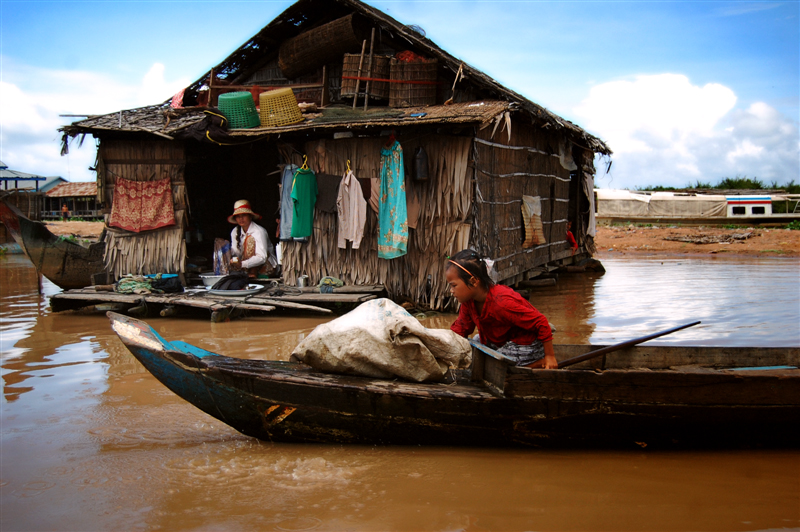
There are some advantages of course, to living on the foreshore, one of which is that your need for a car is reduced, because it allows you to do this:
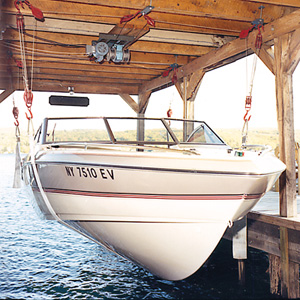
But then of course everyone wants in on the action, and before you know it, it all ends up looking a bit like this example from Hong Kong:
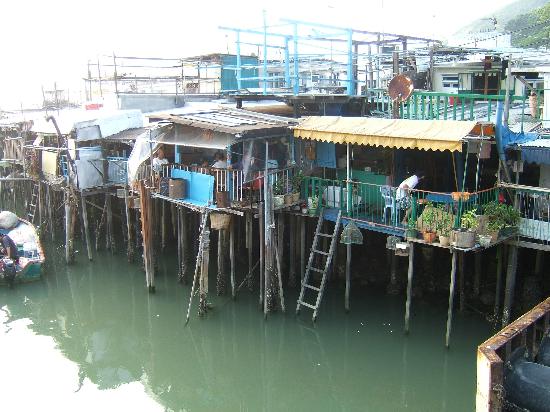
And of course no one ever wants to end up like this:
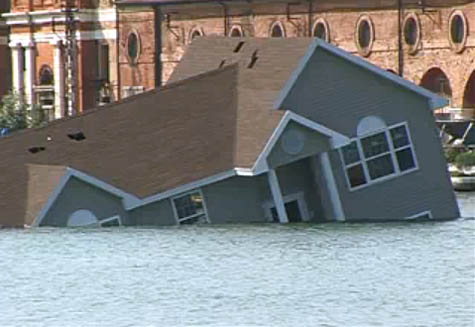
So, what about this, which is a nice model for the new clubhouse at Lyall Bay. We can see under it, hide under it, look through it, store the boats below it, it’s not damaging the sand dunes, seems to have a lot of plus points going for it…
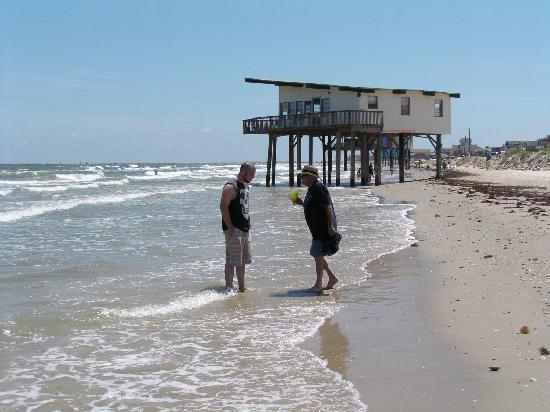
….much the same as has already been done at Rawene in the Hokianga (the fush and chup shop next door to this house is one of the best situated shops in the country…):

Looking into the future, and with some creative engineering of former oil rig legs, this is possibly what we may end up with: I’m sure that it is what many may dream of:

But when it comes down to it, all I really need to be able to do is simply this:
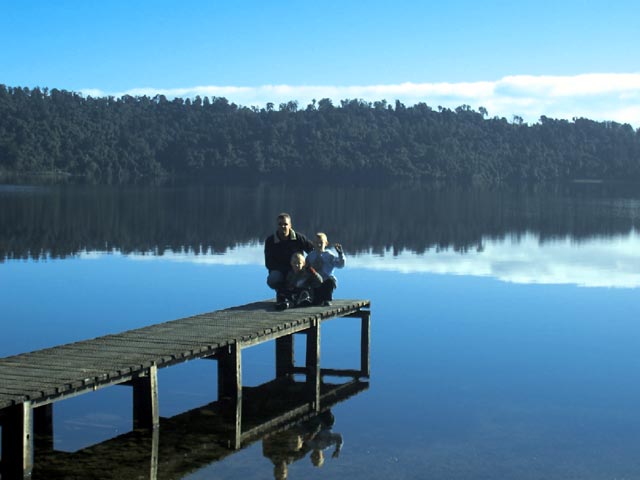






Not sure how many of you were watching the new series of Grand Designs on Saturday night, but that Kevin McCloud chappie was in Venice, on the start of his televised Grand Tour. The whole of Venice being famous for its architecture, and its romance (and, apparently, its whores in past centuries), and it is all down to it being built on small muddy islands in the lagoon.
Also featuring this same weekend the Dominion was discussing the silting up of Porirua Harbour and the Pauatahanui inlet, where apparently the silt is building up into small muddy islands in the lagoon…. …the silt is polluted, and the shellfish are not edible. What to do?
See where I am going here? With a different attitude to the low lying land of foreshore – there is an option here for Porirua city to become the modern Venice of the South…
I think most people would agree that there is no more authoratative way of declaring “this bit of the beach is mine” than sticking a house on it.
And as in New Zealand we’re more likely to stick to the American paradigm of development rather than the more poetic European or Pacific Island approaches, I think if we were allowed to build on the beach we’d end up with more Malibus than Venices.
I drove through Malibu earlier this year, and man was it horrendous. This big highway cuts along the coastline at a max distance of 100m from the shore. Right on the shore are houses. They’re not even nice, luxuriant beach-side mansions. They’re ugly, jammed up amongst one another so that the beach is no longer visible from the road and that public access to the beach is restricted. It had a very weird vibe. At least in New Zealand we’re sensible enough to leave our dunes alone and build back from the shore a bit.
Harbours are a different story though. They’re already built upon and industrialised. It could be cool to see ‘Harbour City’ realise its title in a sensitive and interesting way.
You’re right, Malibu is pretty awful – but things go better with Coke. ba dom tish !
There are two fundamentally different land settlement patterns at play here. One is the ‘British’ or Old World model, of houses backing onto the waterway, as in most of the riperian rights places in the UK. Obviously, if your family has been living on a rivers edge for 900 years, the edge of your property is taken as the centre of the river, and the Poms fiercely guard their right to fish. Most rivers in Britain, where they are in an urban situation, are surrounded by houses (and ex-industrial buildings such as Mills) and the road goes on the other side of the house from the river. Gross generalisation there, but I’m sure it is true.
The other model is the New World model – or the typically American / Aotearoan model, whereby a road is the closest thing to the river. This comes from our later settlement pattern, whereby the road explored before the people settled. Hence, a road along the rivers edge. In Wellington, that gives us the complete encirclement of Wellington by road, and not by houses. I think there are odd little spots where things are different, like part of Plimmerton and perhaps a dollop in Eastbourne, along with the odd boat shed, but largely we have ‘public’ land at the waters edge, rather than the riperian rights situation of Britain.
That actually makes Malibu quite different. Most of the Pacific Coast Highway 101 from LA up to San Fran is right next to the ocean. Malibu is a freak of real estate heaven for the yanks. Pity they screwed it up.